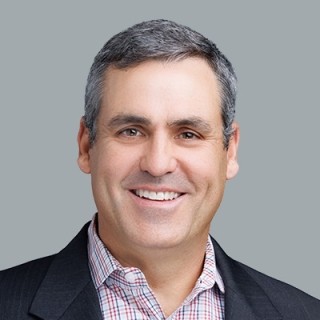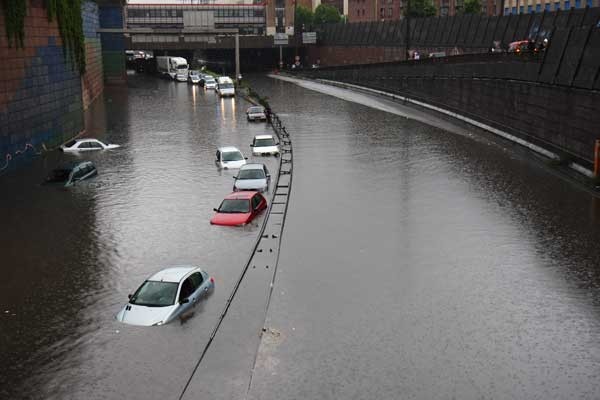Blog
AIG Leaves California: The Challenge of Homeowner’s Insurance
At the end of 2021, securing homeowner’s insurance became more complicated for individuals in California. Kathleen Zortman, President and CEO of AIG Private Client Group, alerted the personal insurance industry of her company’s decision to cease offering admitted insurance solutions in California. AIG PCG, one of the leading underwriters of personal insurance for high-net-worth individuals in the world, put the California Department of Insurance on notice regarding their intentions. Non-renewals are expected to begin issuing for policyholders later this year.

Note that this announcement does not impact AIG Specialty excess and surplus lines placements, admitted private passenger automobile, workers’ comp, or yacht policies within the state (but applies to all other Private Client Group lines.)
Here you’ll get insight into what spurred AIG’s decision as well as guidance on what you can do to insure your California home properly and cost-effectively.
AIG Withdraws: Catastrophic Events Cause Insurance Challenges
AIG’s issues and desire to withdraw mostly stem from an inability to conduct operations profitably due to catastrophic claims and a highly regulated California Division of Insurance that is intent on maintaining policyholder rates.
Climate change has been a major factor leading to increased wildfire losses. Over the past several years, the personal insurance industry has been hit with a record number of severe losses.
Since 2012 and excluding COVID, in California alone there were 10 catastrophic events exceeding $10 billion in losses. Nine of those 10 events occurred in 2017 through the third quarter of 2021. Over the last five years, California has experienced:
- The most active years of wildfire in decades
- Some of the most damaging mudslides in state history
- Two of the state’s largest wildfires by acreage in 2021 alone.
The cost of claims has been further spurred by population growth in the state. Expensive new homes have been built in beautiful but unprotected locations, and construction costs have skyrocketed due to fluctuating labor and supply chain issues.
In 2022, the future of California’s personal insurance markets seems uncertain with the potential that other peer insurance carriers may follow suit with AIG.
Today AIG roughly controls $175 million in homeowner’s insurance premiums in California. After the major fires in 2018, AIG CA’s combined ratio was 992%, whereas national personal lines insurers are at 109%.
Combined ratio is a measure of profitability used by an insurance company to gauge how well it is performing in its daily operations. The combined ratio is calculated by taking the sum of incurred losses and expenses and then dividing them by the earned premium. The lower the percentage, the more profitable the insurance company.
Here is some additional data specific to AIG, the CA Division of Insurance, and state of the market as of today:
- Peers like Chubb write approximately $278 million in homeowner’s premium in the state, direct writers like State Farm at $1.75 billion. (2020 data)
- The State of California Division of Insurance allows carriers to file for rate relief through Proposition 103 up to 6.9% per filing, without having to conduct a hearing.
- AIG managed to issue a single 6.9% rate increase to policyholders on April 18, 2019. This increase was followed by another homeowner’s specific rate increase effective December 31, 2020 at 17.5%. AIG has filed for additional rate increases that until this time have not been announced or approved.
- Starting in 2019, after dismal results for most California carriers in 2017 and 2018, the major peer group of admitted personal insurers internally put restrictions—and, in some cases, moratoriums—on placing new business in the state. These restrictive underwriting measures remain in place today.
- Given the carriers’ decisions to ban new policies, the California Division of Insurance enacted legislation to block insurers from non-renewing risks that had experienced wildfire losses and rate increases for policy holders.
- In response to the legislation and continued losses, carriers have issued non-renewals in those areas that were not under moratorium, which are typically mapped as high hazard “Red Zones” for wildfire loss potential.
What to Consider When Evaluating Your Insurance Carrier
When your homeowner’s policy is up for renewal, it is essential to evaluate your carrier carefully. Here are some factors to keep in mind:
- The carrier’s financial stability, including the states in which they write, years in the business, and reputation for paying claims.
- The wording of the insurance forms. Exclusions and endorsements can drastically change the language or intent of the coverage. Since insurance forms are not standardized, you should read them closely.
- Your broker’s relationship with the markets, including how they have worked with a specific carrier for this line of coverage.
Steps You Can Take to Improve the Insurability of Your Home
The entire Western US, along with parts of the Midwest and Southeast, is facing an increased risk of wildfire. Having a proactive approach to reducing future losses is imperative to reducing the risk to your home. Some of the main steps you can take to reduce the wildfire risk to your home and property include:
- Remove brush, shrubs, and trees to create defensible space around the home
- Modify the features of the home’s exterior, including the installation of non-flammable siding, roofs, and ember resistant vents
- Install water hydrants immediately adjacent to the property
- Retrofit the home with fire suppression equipment
Properties that are located within high hazard brush zones, are remote from the proximity/accessibility to a fire department, are vacant for extended periods of time, and have wood shake roofs are heavily scrutinized by insurance carriers.
Ideal risks tell a much better story with limited claims activity, good driving records, non-wildfire causes like water intrusion mitigated with monitoring devices, and properties that are well secured and updated.
Also, it’s critical to keep all records of improvements you make to your home and property. At renewal time, underwriters may require increased documentation.
The California Fair Plan may be a solution as an insurer of last resort. However, there are significant limitations of this dwelling fire-only coverage when compared to standard homeowner’s policies.
We will continue to monitor any changes in homeowner’s policy renewals as they occur. Our goal is to help keep you informed so that you can make the best decisions for your home and property. Please contact your Woodruff Sawyer representative if you have any questions.
Author
Table of Contents









